Unleashing the Power of CI/CD: Automation, Testing, and Quality at Speed
Misba Kagad
Posted On: November 2, 2023
![]() 35520 Views
35520 Views
![]() 15 Min Read
15 Min Read
The conventional idea of a “release” has changed in the CI/CD age. Many companies, including enterprise SaaS firms, now deploy code frequently, even daily. However, for large enterprises, frequent major releases can be overwhelming. In the race against time, releases could also lead to potential disruptions to established business processes, which some businesses resist.
Continuous production updates also carry security risks and can disrupt workflows, especially at scale. Salesforce, for instance, conducts three major annual releases, allowing customers ample time to prepare. This demonstrates that, while frequent code updates occur, not all customers can accommodate them, especially at a business level.
These methods allow companies to release high-quality products, fixes, and new features at an accelerated pace in order to meet customer requirements and staying ahead of the competition. Since quality is the cornerstone of any piece of software, it is recommended to invest in scalable and reliable testing at every stage of product (or project) development. Automation used in conjunction with CI/CD can be instrumental in building, testing, and releasing top-notch quality software at a rapid pace.
In this blog, we will delve into the world of CI/CD, shedding light on what it is, its advantages over traditional approaches, the significance of continuous testing, and the structure of the CI/CD pipeline. If you are preparing for an interview you can learn more through CI/CD Interview Questions.
What is Continuous Integration (CI)?
Continuous Integration (CI) is a software development practice in which developers integrate their code changes into a shared code repository on a regular and frequent basis, generally multiple times per day. By automatically creating, testing, and validating code changes, CI aims to uncover and address integration issues early in the development process.
This practice helps in ensuring that the software features are functional and deployable throughout the development cycle, allowing for faster & reliable software deployment.
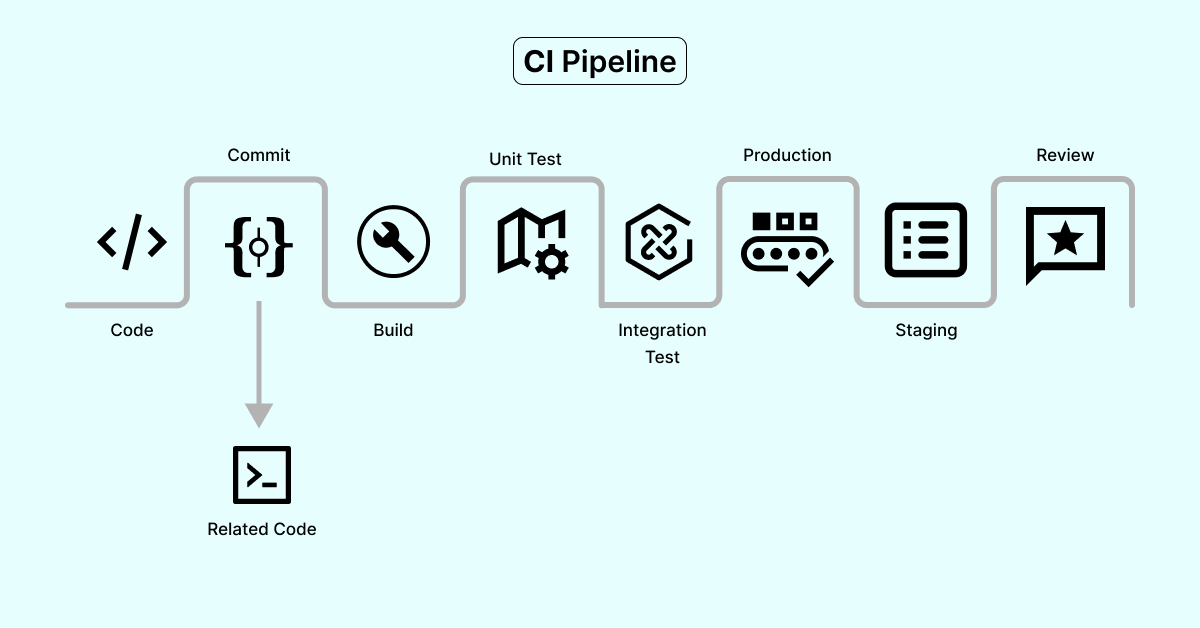
Here are some of the salient benefits of using CI:
Early Detection of Bugs
CI systems automatically build and test the code whenever developers make any code commits. This helps in the early detection of issues (bugs or side-effects) that might arise during integration, regression, and more.
It also aids in resolving merge conflicts, allowing developers to fix them quickly. According to IBM’s Systems Sciences Institute, the cost of fixing a bug detected during implementation is around six times that of one found during design.
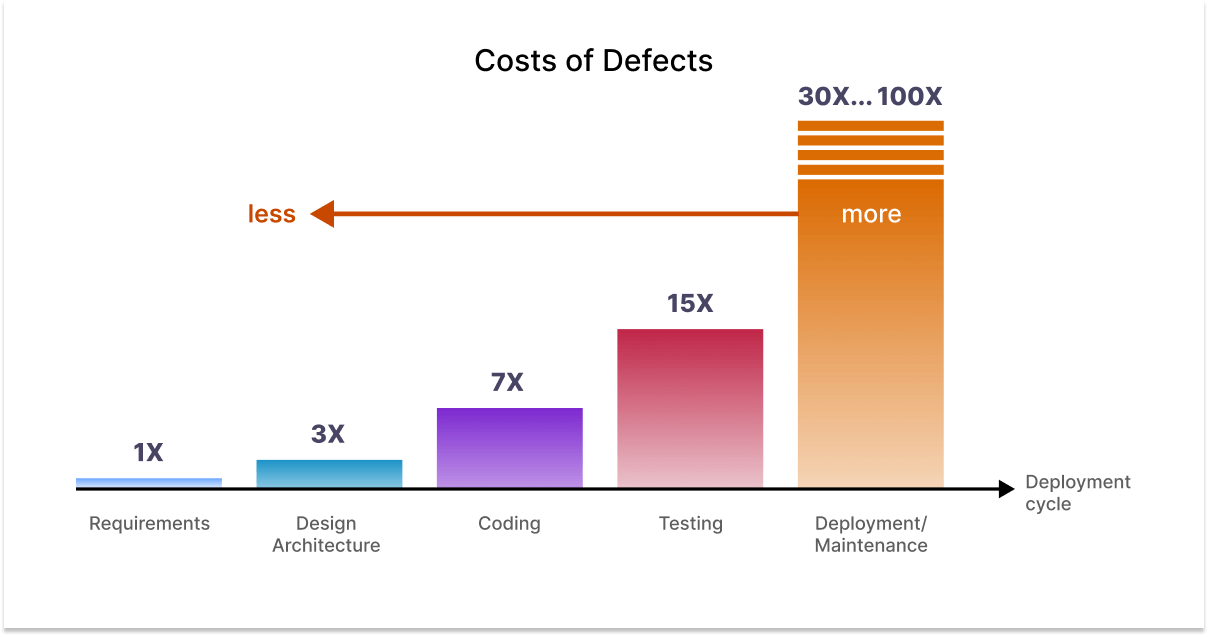
The cost of fixing a bug discovered after product release is 4~5 times that of one found during design and up to 100 times that of one detected during maintenance. In other words, as the software development proceeds the cost of fixing bugs increases exponentially, with CI/CD you can fix bugs at a faster rate, shipping quality code quicker.
Integration of Code
CI encourages developers to integrate their code into a common repository on a regular basis, boosting collaboration and decreasing integration issues caused by delayed (or simultaneous) code changes.
It’s especially useful when dealing with aspects like interactions between sub-teams with different integration rhythms, component build-time dependencies, geographically separated teams in different time zones, and system build performance.
By taking the said issues into account & leveraging the potential of CI, development teams can more effectively handle the complexities of collaboration, dependencies, and system performance. This eventually helps in improved efficiency, increased productivity, and reduced bug-fixing time. All of this leads to an elevated product experience and enhanced customer delight!
Automation
Automation in CI delivers deep insights into CI workflows, enhancing overall performance and issue resolution efficiency. Automation guarantees that repetitive tasks, testing, and providing thoroughly tested software that can later be deployed in the Continuous Deployment pipeline. Development teams collect useful data, discover and address issues more quickly, and optimize the overall development process for better results by automating tests.
It is important to automate as much of the testing process as possible to ensure that the microservices are thoroughly tested and to make it easier to repeat the testing process as changes are made to the code. Incorporating a dedicated microservice testing segment in your overall testing strategy is crucial to effectively validate the individual components and their interactions, ensuring the reliability and performance of your microservices architecture.
In software testing, microservices refers to a testing approach used to evaluate the functionality, performance, and security of individual components in a microservices architecture.
A microservices architecture builds and deploys software applications as a collection of small, independently deployable services. Some of the world’s most innovative and successful companies, like Amazon, Netflix, Uber, and Etsy, use microservices architecture.
This comprehensive view streamlines CI activity, resolving bottlenecks, reducing costs, and improving software quality. Automation at scale is critical for businesses as it reduces manual intervention and accelerates releases.
This is where the right choice of test automation platform becomes extremely important, as it has the potential to create a monumental impact on all the aspects of CI. The platforms, like LambdaTest integrate with numerous CI/CD tools, monitor pipeline activity, detect flaky behavior, and accelerate test execution, reducing time spent in CI.
It integrates seamlessly with various CI environments and provides alerts, collaborative tools, and detailed insights for more efficient monitoring. For instance, slack integration enables direct bug reporting from LambdaTest to a designated Slack channel. It allows for the sharing of UI observations, captured screenshots, and annotated issue details with team members in real-time.
Hence, it is recommended to invest on an automation platform that has an integration and support ecosystem built around automated testing! This will drive impactful short-term and long-term gains.
What is Continuous Delivery and Continuous Deployment (CD) ?
Expanding on CI, Continuous Delivery (CD) and Continuous Deployment strategies make software delivery to production, staging, or pre-production environments automatic and consistent.
With Continuous Integration, we have managed to test the code continuously. However, that is not the end of it. To ensure that the code fixes (or new feature additions) are deployed at the fastest pace possible, the code also needs to be deployed at lightning speed!
Having said that, manual intervention would still be necessary if the code is not being verified using an automated framework (or tool). This is where Continuous Delivery and Continuous Deployment can be leveraged to ensure that there is zero compromise on software quality and faster release.
What is Continuous Delivery?
Continuous Delivery (CD) is a software development practice that involves automating code change deployment to staging or production environments. The program is made deployable in CD after successful integration and passing automated tests in the Continuous Integration (CI) pipeline.
This means it can be released to a staging environment for additional testing and quality assurance before potentially being moved to the production environment with minimal manual intervention. CD seeks to keep code changes in a state where they can be deployed to production, laying the groundwork for more frequent and reliable software releases.
What is Continuous Deployment?
Continuous Deployment is a software development practice that automates the release of code after it has passed the Continuous Integration process.This method is very popular in businesses that require frequent software releases.
Manual intervention is sometimes needed, particularly for moving patches to production to manage side effects like system resets and data loss. To address security risks in your CI/CD pipeline, prioritize security alongside speed and efficiency (Explaining the aspects of security from a DevOps standpoint is beyond the scope of this blog.). Potential threats include insecure coding, access control issues, security misconfigurations, exposure of secret keys, and compromised or unauthorized third-party libraries.
Continuous monitoring is crucial to detect irregularities promptly, while code analysis, using tools like static application security testing (SAST), dynamic application security testing (DAST), software composition analysis (SCA) and penetration testing, helps close potential security loopholes. These measures reduce the risk of cyberattacks and enhance the overall security of your CI/CD pipeline.
Effective failure mitigation involves pausing releases, code fixes, or rollbacks, with the latter being a critical fallback option. Ignoring rollback can lead to unfixable issues, leaving systems vulnerable leading to revenue loss and damaging brand image. Not having a rollback plan cost PayPal 100x revenue loss due to transaction failure in their new release. In a nutshell, software changes require careful preparation and manual oversight (in certain scenarios) to keep things stable.
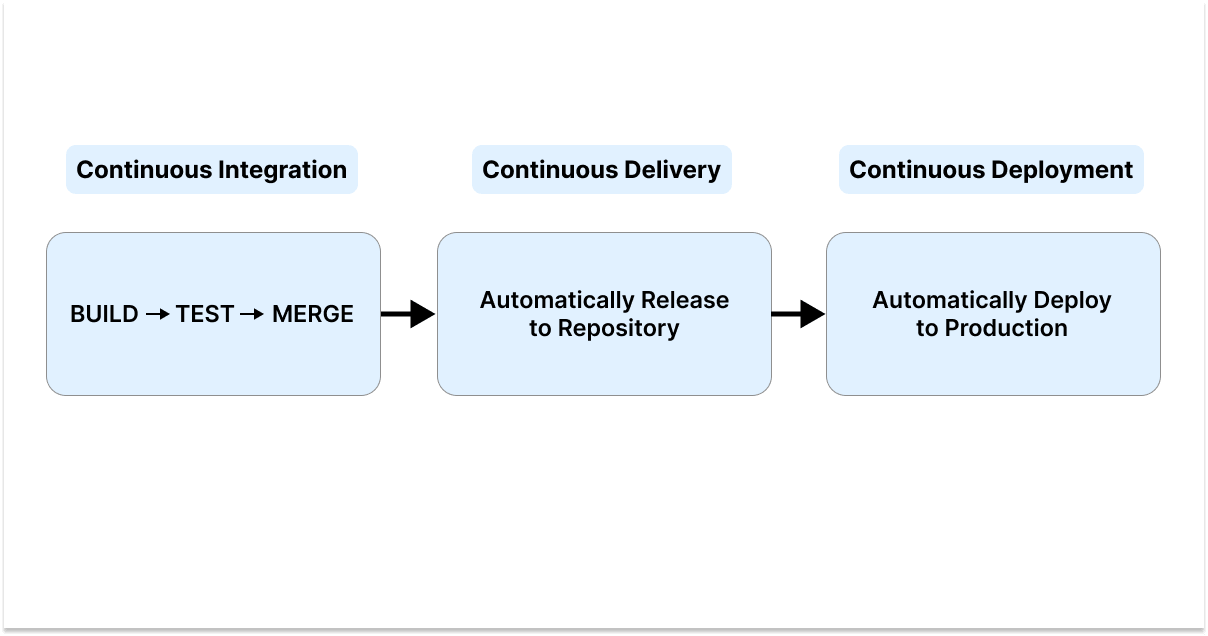
A perfect example of how faster feedback loops help you resolve issues promptly is the prompt resolution of Apple’s iPhone 15 Pro and Pro Max overheating issue. Apple promptly addressed overheating issues in the iPhone 15 Pro and Pro Max, which were traced back to a software bug in iOS 17.
Their swift response to user feedback helped maintain the products’ sales and reputation. The problem, affecting some users, was related to increased background activity during setup, alongside third-party app updates that overloaded the phone’s CPU. By collaborating with app developers.
Continuous Integration (CI), Continuous Delivery, and Continuous Deployment (CD) together form a powerful practice. They collectively expedite feedback, reduce bottlenecks, and enhance overall software quality, enabling faster releases.
Ultimately boosting the efficiency and effectiveness of software development and deployment processes. Continuous Testing is integral in software development, ensuring ongoing quality as the code evolves.
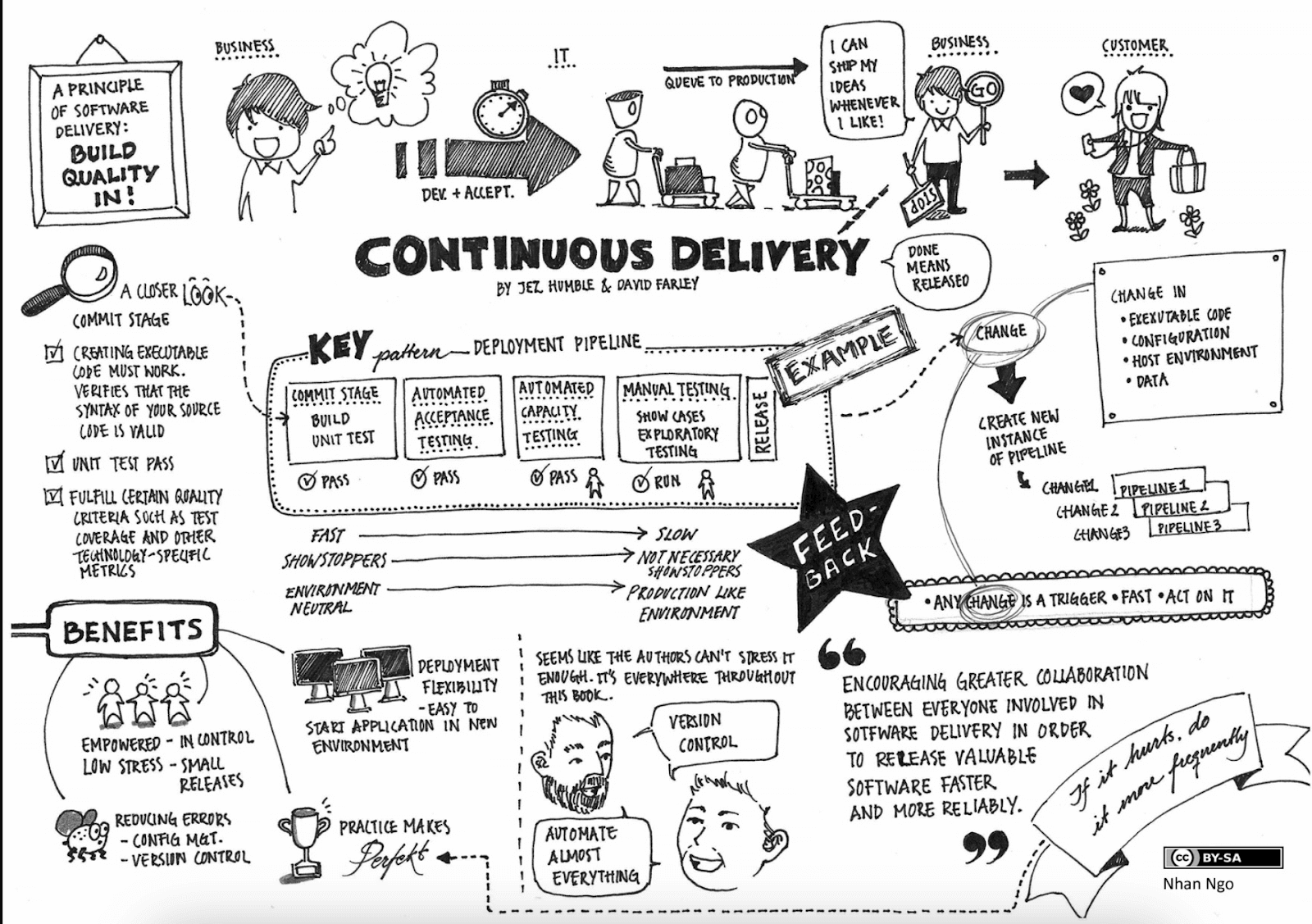
Automation is crucial to leverage the full potential of CI and CD, enabling rapid and consistent testing, early issue detection, and maintaining software reliability and stability at every stage of product development.
Continuous Testing in CI/CD
Continuous Testing is a software testing approach throughout the entire software development lifecycle. It involves running tests at every stage of development so that not even a single line of untested code gets into the respective environment (e.g. staging, production, etc.). Continuous Testing plays a crucial role in the CI/CD pipeline, as it ensures that software is rigorously and continuously tested at every stage of development.
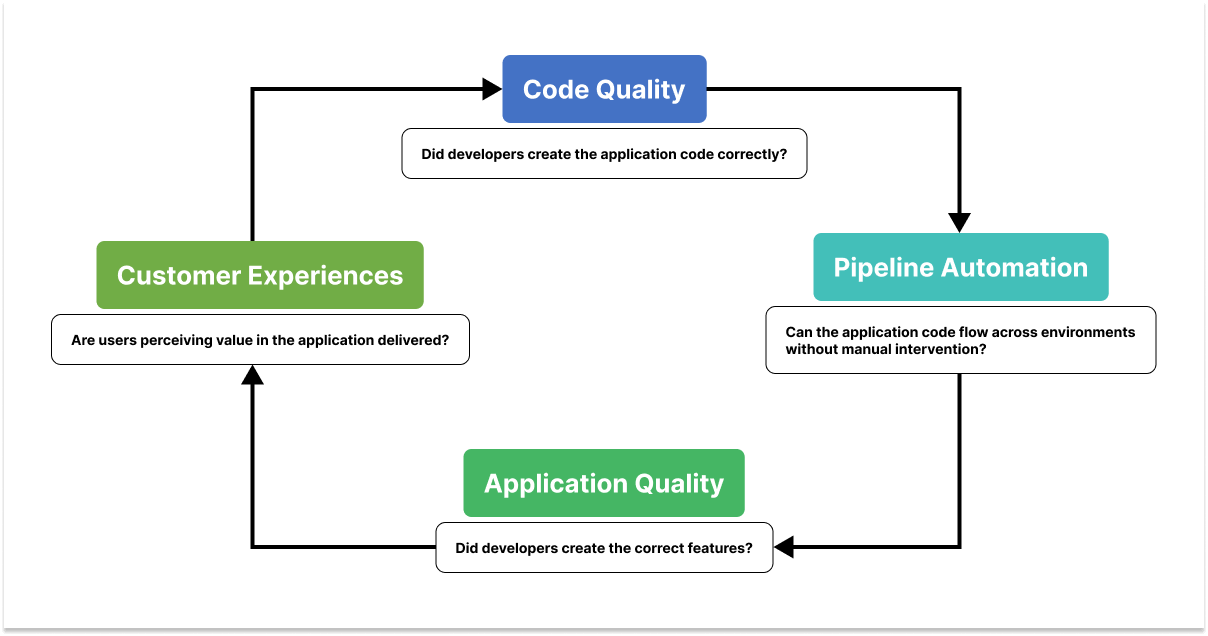
Early Issue Detection
Continuous Testing starts with the automated testing of code changes as soon as they are integrated into the shared repository. This early testing helps detect issues, including bugs, integration errors, and regressions, at their earliest stages when they are easier to fix, and resolving the bug costs relatively less compared to post-deployment.
Accelerated Feedback Cycles
Continuous Testing provides rapid feedback to developers, enabling them to quickly identify and address any issues in their code. This helps in maintaining a fast development pace and ensures top quality software. Continuous Testing provides a feedback loop to all stakeholders, not just developers.
Test results are communicated to the entire team, including developers, QAs, project managers ensuring transparency and informed decision-making.Ultimately, Continuous Testing contributes to a positive user experience.
“Testing is often a bottleneck for fast release. Most executives view testing as the second-to-last step of the SDLC that happens just before the release. However, the truth is that businesses have to test early and as often as they can.
It’ll aid in solving customer problems/use cases faster and more efficiently. Continuous testing is an important investment in rapid digital transformation.”
– Asad Khan (Founder & CEO), LambdaTest (Source)
Delivering reliable and bug-free software is a crucial aspect of software development that significantly impacts the overall success of a product and the satisfaction of its end-users. This commitment to software quality goes beyond just meeting the basic functionality requirements; it is about ensuring a seamless and positive user experience.
Automated Testing
The wholesome benefits of Continuous Testing (CT) can be better leveraged by inculcating automated testing throughout the pipeline. This includes automated unit tests, integration tests, and functional tests for ensuring that the code works seamlessly at every stage of product development.
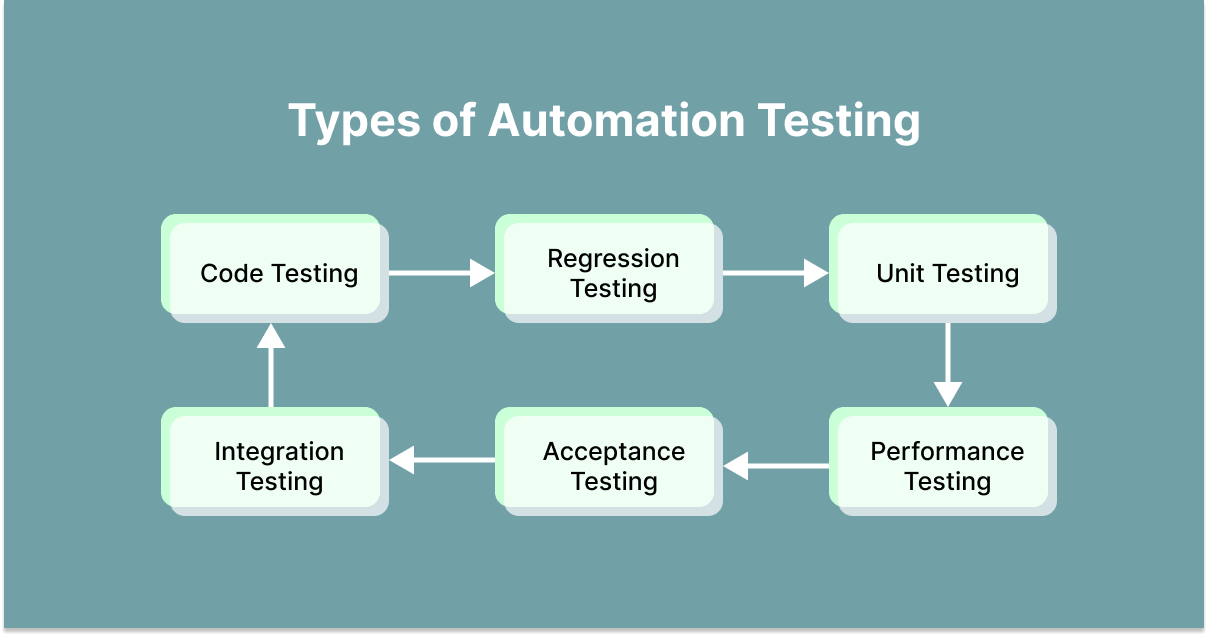
Test Coverage
Test coverage is a vital aspect of Continuous Testing. It ensures that a substantial amount of the code is tested by tracking how much of the codebase is covered by tests. This practice prevents changes in one area of the code from inadvertently causing issues in other parts of the application.
By maintaining comprehensive test coverage, Continuous Testing upholds software quality and stability throughout development.
Regression Testing
Regression testing, an important component of Continuous Testing, verifies that new code changes does not disrupt existing functionality or create irregularities. This practice is crucial for preserving the stability of the product as new features and updates are incorporated. By confirming that previously working aspects remain intact, regression testing safeguards against unintended issues and ensures the software’s reliability remains intact during ongoing development.
Integration Testing
In CI/CD pipelines, frequent integration of components and modules is a common practice. Continuous Testing involves integration testing, which validates the seamless functioning of these integrations, ensuring that the code remains error-free and that all components work seamlessly together. This proactive approach enhances the reliability and stability of the integrated software.
Security Testing
Security testing is a critical component of Continuous Testing. It involves systematically identifying and mitigating vulnerabilities in software throughout the development cycle. By addressing security issues early, this approach significantly reduces the risk of security breaches, safeguarding sensitive data and enhancing overall system security.
Performance Testing
Performance testing evaluates the speed, scalability, and resource efficiency of a software. It guarantees quick reaction times, flexibility to handle increasing workloads, and efficient use of resources. Development teams can proactively resolve performance issues by proactively detecting them with the use of continuous performance testing. Consequently, this enhances the software’s overall reliability and user experience by ensuring it meets performance expectations under real-world conditions.
Compatibility Testing
Testing Across Diverse Environments and Devices to guarantee software compatibility and reliability, it is imperative to conduct tests across a variety of environments, operating systems, and devices. This comprehensive testing approach is crucial for identifying issues that may be specific to particular configurations, ultimately resulting in a more robust and universally accessible product.
By adhering to these Continuous Testing practices, software development teams can consistently uphold high-quality standards while accelerating their product delivery, aligning seamlessly with the fundamental principles of continuous integration and continuous delivery (CI/CD).
Testing at earlier stages ensures proactive issue resolution and a cost-effective development process, while frequent testing before release, often automated, guarantees the reliability and stability of the product throughout its development journey. These practices collectively contribute to robust software development, fostering both efficiency and quality in the CI/CD framework.
How to Choose the Right Test Automation Platform?
When choosing the right test automation platform, prioritize performance, integration, and observability. Opt for AI-powered features for faster testing, real device testing, and AI-driven test orchestration. Consider user-friendliness, alerting, and reporting capabilities, as well as customization options to align with your specific needs.
Ensure the platform fits your long-term software development strategy, recognizing the growing importance of AI-enhanced “Test Observability” for successful CI/CD and high-quality software delivery in the evolving software development landscape.
The Test Intelligence is an AI-driven testing system that evolves with each test execution. It detects flaky tests, offers root cause analysis, and provides analytics to enhance software quality and streamline debugging, ultimately saving time and costs in software development.
AI is pivotal for enhancing Test Observability as it can analyze large volumes of testing data in real-time, uncovering patterns and anomalies that human testers might overlook. AI-driven test observability tools can automatically raise alerts when unusual behavior is detected, enabling quick responses.
Transitioning from traditional Continuous Integration (CI) to AI-driven CI presents challenges like system integration, the need for AI expertise, data privacy, costs, tool maturity, and the risk of over-reliance on AI. However, AI-enhanced CI offers benefits such as increased efficiency, improved code quality, predictive analytics for issue prevention, better decision-making, and enhanced consistency in applying development standards.
This transformation accelerates the CI process, reduces errors, and enhances the overall software development lifecycle. Dynamic testing environment provisioning ensures accurate and consistent testing. E2E regression testing is crucial since it validates the entire application, maintaining functional integrity and ensuring a seamless user experience.
By reducing risks, ensuring cross-browser and cross-device compatibility, and preventing regressions, this thorough testing guarantees the steady and dependable delivery of your product. HyperExecute is one such advanced platform that is available in the market that offers all.
It is an AI-native test orchestration cloud platform that’s up to 70% faster than traditional cloud grids. It offers hosted runners for major operating systems and programming languages, AI-native test orchestration, real-time console and execution logs, automatic report generation, real device test execution, and seamless deployment on popular cloud platforms.
HyperExecute combines the speed of local setups with the intelligence of a cloud grid, features smart workflows, Git support, test artifact management, dependency caching, AI-native CI features, automatic tunnel management, and a command line binary client. It allows for customizable test environments and efficient test execution with intelligent features to save time and resources, so that you can provide top-notch quality software along with fast delivery.
Conclusion
In conclusion, CI/CD is the driving force behind a software development revolution, offering the perfect blend of speed and quality to meet the expectations of today’s quality-conscious users. Through automation, continuous testing, and agile deployment, it has reshaped how software is developed and delivered.
Continuous Integration and Continuous Delivery, coupled with the right test automation tools, stand as the bedrock of modern software development, providing the means to remain competitive in an ever-changing digital landscape. Embrace CI/CD and unlock the power of automation, testing, and quality in your software development journey.
Got Questions? Drop them on LambdaTest Community. Visit now













